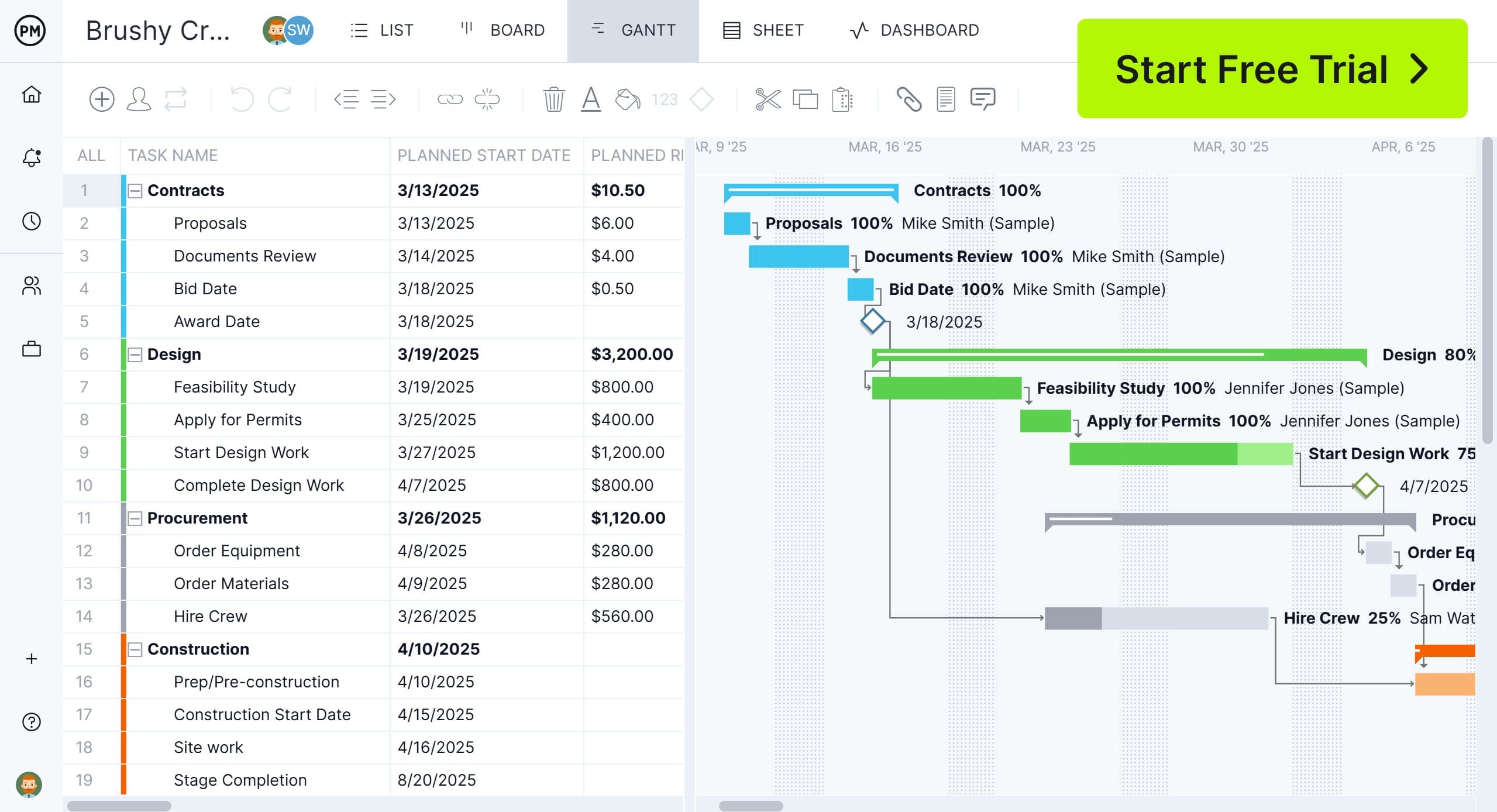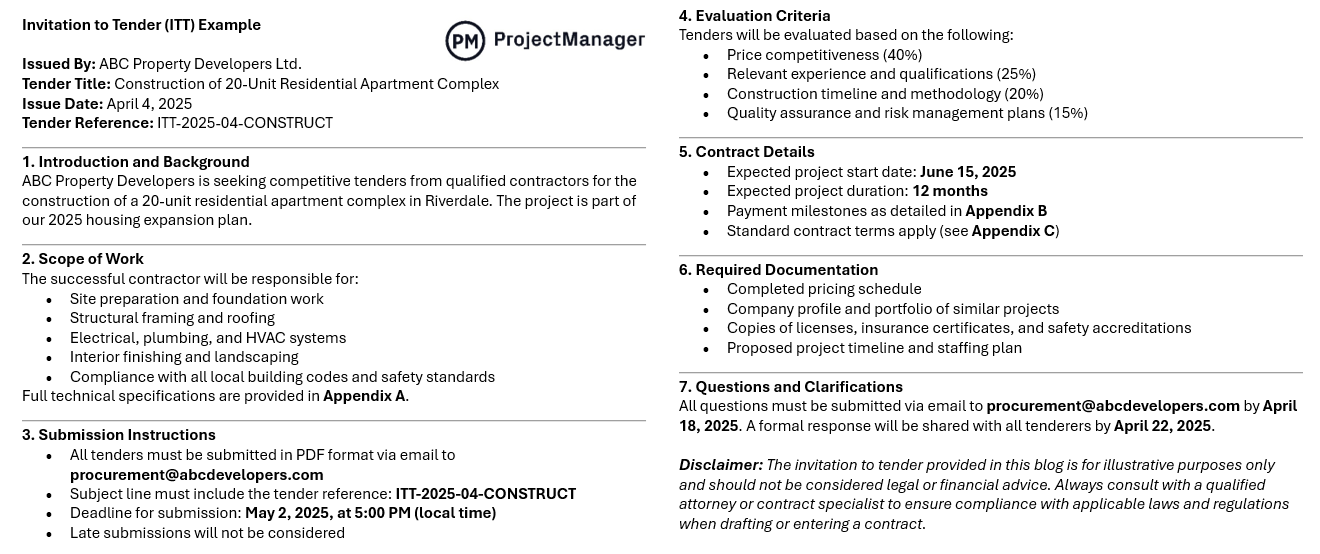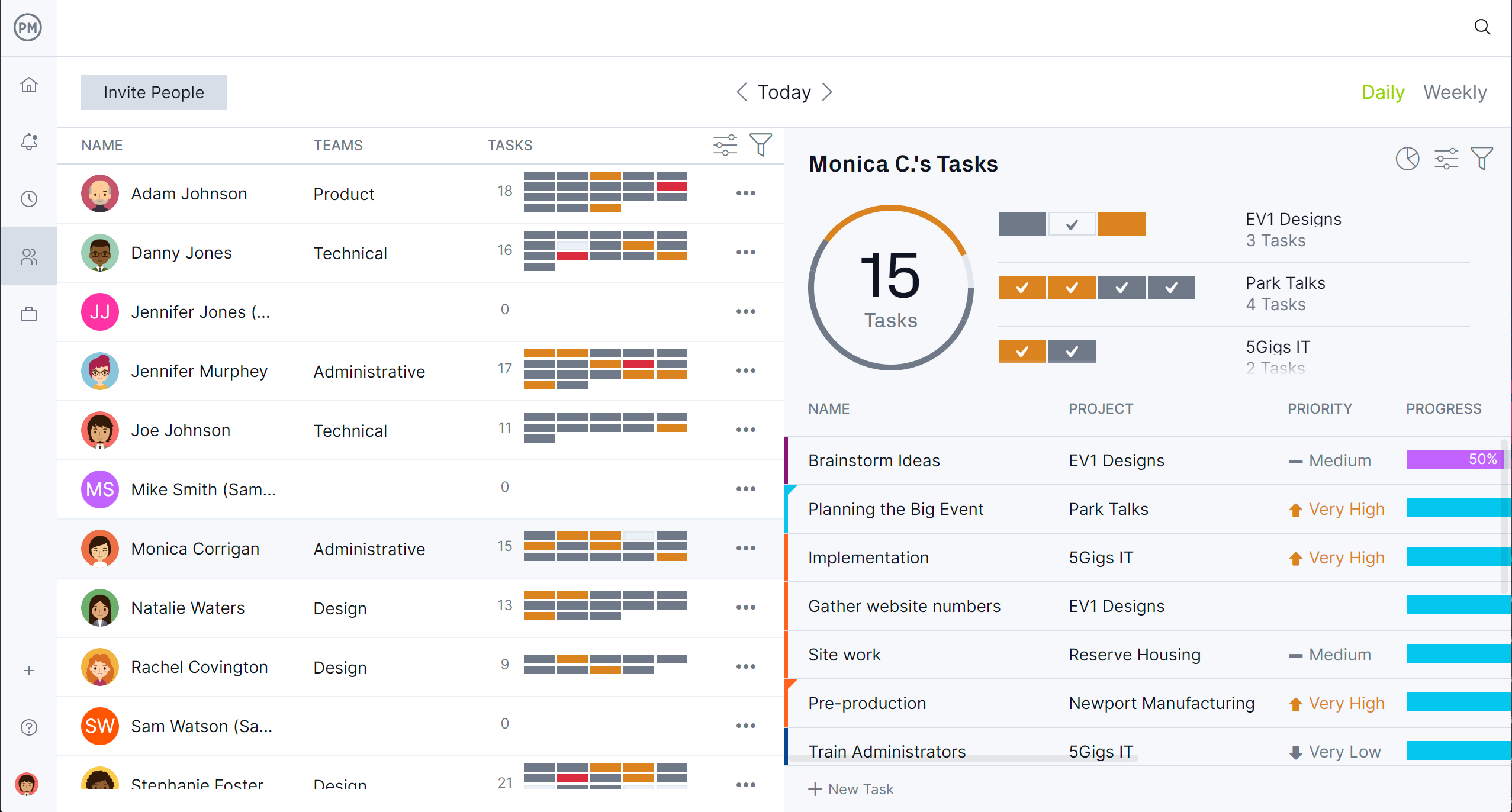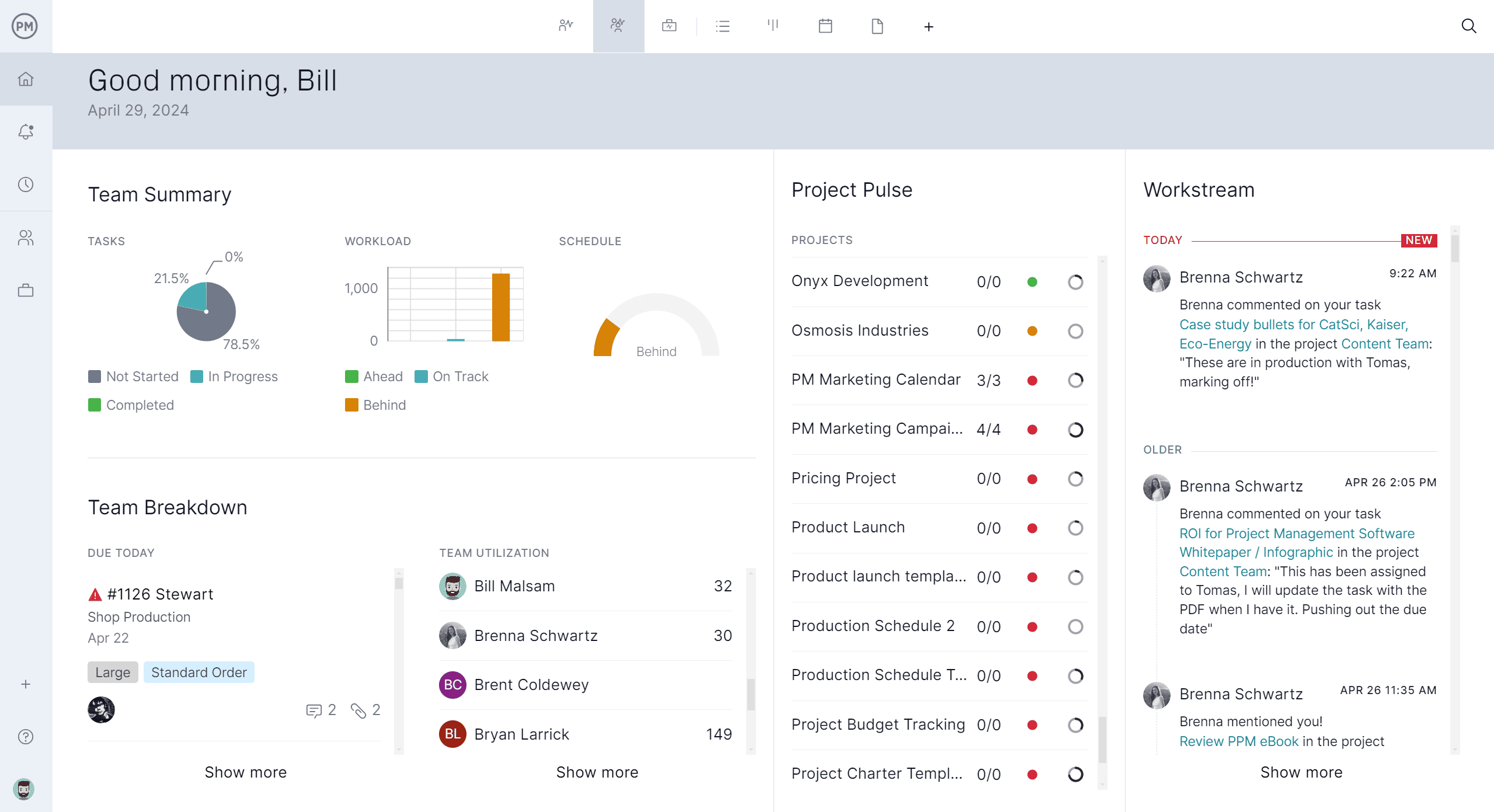Projects that employ contractors or work with suppliers and service providers need to manage their procurement process. This is usually started by an invitation to tender that the organization initiating the project will send out.
Why do they send an invitation to tender, what is it and who uses it? We will answer those questions below. We’ll also outline what goes into a thorough invitation to tender and then illustrate the process with an example to make it clear.
What Is an Invitation to Tender?
Let’s start with a definition. An invitation to tender is a formal document issued by a company or organization to invite suppliers, contractors or service providers to submit a bid or proposal for the supply of specific goods, services or work. It’s typically used in procurement processes, especially for large or complex projects that require competitive bidding.
The reason to use an invitation to tender is that it ensures transparency and fairness in supplier selection. It also encourages competitive pricing and innovation. The process also helps to identify the most capable and cost-effective vendors. In short, this is a critical part of a structured procurement process, designed to solicit competitive and compliant offers from qualified vendors.
An invitation to tender also plays a significant role in shaping a project’s Gantt chart by defining key milestones, timelines and tasks crucial to the project’s success. When using a Gantt chart featured in project management software, the scope, deliverables and milestones outlined in the invitation to tender become a visual and dynamic tool for managing a project’s flow.
ProjectManager is award-winning project and portfolio management software with robust Gantt charts that create clear timelines and deadlines, define key milestones, scope and deliverables with risk and budget management features. Use these Gantt charts to schedule tasks, resources and costs. Plus, link all four types of task dependencies to avoid cost overruns and filter for the critical path. Get started with ProjectManager for free.

When Is an Invitation to Tender Typically Used?
An invitation to tender is commonly employed when a project requires formal proposals and competitive bidding to ensure transparency, value for money and quality. They’re typically used in industries and situations where multiple suppliers or contractors can meet the project’s requirements and the best option needs to be selected based on price, quality and capability. Below are several key areas where it is used.
- Construction Projects: Invitation to tender are frequently used in the construction industry to invite contractors to bid on building or renovation projects. These tenders help organizations select the most suitable company based on cost estimates, experience and the ability to meet deadlines and specifications.
- Government Procurement: Government agencies use an invitation to tender to ensure that public funds are spent efficiently and transparently. By inviting multiple suppliers or service providers to bid on government contracts, the process ensures fairness and accountability in procuring goods and services for the public sector.
- Infrastructure Development: Large-scale infrastructure projects such as roads, bridges or energy facilities often require an ITT to ensure contractors or vendors are selected properly. The complexity and scale of these projects make it essential to select capable suppliers who can meet the technical and safety standards required.
- IT Systems or Consultancy Services: When organizations require specialized IT systems or consultancy services, an invitation to tender is issued to invite firms to submit proposals. It typically outlines the scope of the service, technical specifications and project timelines, ensuring that only qualified professionals or firms are considered for the job.
What Should Be Included In an Invitation to Tender?
An invitation to tender must be thorough, clear and structured to ensure all potential bidders have the information needed to submit accurate and competitive proposals. A well-prepared one sets the foundation for a successful procurement process by reducing misunderstandings, ensuring compliance and attracting qualified bidders. Below are the key components that should be included.
Introduction and Background
This section provides an overview of the issuing organization and the context of the tender. It explains the project’s purpose, the business need behind it and any relevant background information that helps bidders understand the bigger picture.
Scope of Work
The scope of work outlines the specific tasks, deliverables and expectations associated with the project. It should be detailed and clearly define what the supplier is responsible for, including any performance standards, milestones or technical requirements.
Instructions to Bidders
This part of the invitation to tender offers detailed guidance on how to submit a tender. It includes the submission process, formatting requirements, deadlines, contact information for queries and any protocols for site visits or clarification meetings.
Evaluation Criteria
This section explains how the submitted tenders will be assessed. It usually outlines the weightings for cost, quality, experience, methodology and other relevant factors, helping bidders understand how their proposals will be scored and selected.
Legal and Commercial Terms
Here, the ITT should define contractual conditions such as payment terms, liabilities, warranties, confidentiality agreements and compliance with laws or standards. This ensures that all bidders agree to the same legal framework.
Required Documentation
This lists all forms, certificates and supporting documents that must accompany the bid. These could include financial statements, case studies, insurance policies, licenses or references, depending on the nature of the project.
Tender Timeline
The timeline should include all critical dates in the tendering process, including the release of the invitation to tender, deadline for questions, submission due date, evaluation period and announcement of the selected bidder. This helps all parties plan accordingly and ensures transparency throughout the process.
Invitation Tender vs. Request for Proposal
An invitation to tender and a request for proposal are both formal procurement documents used to solicit bids from external vendors or contractors, but they serve different purposes and are used in different project scenarios. Understanding the distinction between the two helps organizations choose the right method based on the project’s complexity, the clarity of requirements and the level of vendor input needed.
An invitation to tender is typically used when the project requirements are clearly defined and the organization knows exactly what it wants to procure. The focus is on price and compliance, with minimal need for innovation or input from the supplier. They are more rigid and are common in government, construction and infrastructure projects.
A request for proposal is used when the project scope is more complex or open-ended, and the organization seeks vendor expertise to define the best approach. It invites suppliers to propose creative solutions or methodologies to meet an overall goal, allowing for more flexibility and collaboration. This is best for projects requiring strategy, design, technology or custom services. They also tend to be more technical and not focused on price alone.
Invitation to Tender Example
This invitation to tender (ITT) example provides a structured format for soliciting bids from contractors for a residential construction project. It outlines the project background, scope of work, submission requirements, evaluation criteria and key contractual details.
This sample serves as a practical reference for organizations looking to issue a clear and professional ITT document in construction or similar industries. You can download this ITT sample by clicking the image below.

Related Project Management Templates
Some templates can help with the invitation to tender process. Below are three of them from the over 100 free project management templates for Excel and Word that can be downloaded immediately from our site. They cover all aspects of managing a project.
Request for Information Template
Download this free request for information template for Word to collect general information from potential vendors, suppliers or service providers before launching a formal procurement process. It helps project managers, procurement teams or decision-makers understand the market, evaluate capabilities and identify possible solutions to meet their business needs.
Request for Proposal Template
Use this free request for proposal template for Word to solicit detailed proposals from potential vendors or service providers for a specific project, product or service. It outlines the project requirements, evaluation criteria and submission guidelines to ensure consistency in vendor responses and facilitate informed decision-making.
Request for Quote Template
A request for quote is a formal document organizations use to solicit price quotations from suppliers or vendors for specific products, services or work. Unlike a request for proposal, which asks for detailed solutions, this free request for quote template for Word primarily focuses on costs, delivery terms and availability.
How ProjectManager Helps Manage Projects
Procurement is part of the larger project management process. Templates are helpful as relationships are created with vendors and suppliers. But once those services are contracted and the project is being planned, executed and tracked, templates won’t cut it. These static documents aren’t intended for that dynamic process.
Project management software, on the other hand, is designed to deliver projects successfully. ProjectManager is award-winning project and portfolio management software with multiple project views that allow teams to use the tools that are right for them, be that Gantt charts, task lists, kanban boards or calendar views.
Keep Teams Productive With Robust Resource Features
Procurement requires efficient resource management to get the most out of what you have. That includes the proper scheduling with Gantt charts, but also knowing the availability, skill sets and pay rates of the team, which is set when onboarding. This leads to more efficient resource allocation. To ensure that resources are balanced, a color-coded workload page makes it easy to see who is overallocated or underutilized.
Balance the team’s workload without leaving the chart to keep everyone working at capacity without burning them out. The team page is a valuable tool to view the daily or weekly activity of the team. It can be filtered by progress or priority, and tasks can be updated right from that page when changes are made. Plus, free guest licenses keep vendors, suppliers and contractors in the loop.

Track Projects With Real-Time Dashboards and Reports
The ability to manage project teams and the various suppliers, vendors and contractors involves powerful tracking tools. The summary dashboard can be viewed by project managers, teams and others (with free guest licenses) to get an overview and keep everyone updated in one place. It features team summary, breakdown, project pulse and workstream to stay current on comments.
A project or portfolio dashboard tracks time, cost, workload and more on easy-to-read graphs and charts and customizable reports zero in on key metrics such as status, variance, workload, timesheets and more. They can also be filtered and shared with stakeholders to keep them updated on progress. Secure timesheets help with tracking labor costs to avoid overspending on the budget.

Related Project Management Content
There’s more to project management than an invitation to tender, though that’s an important part of the procurement process. For readers who want to learn more about how procurement fits into the larger project management process, below are some recent blogs.
- Construction Bidding Basics: Mastering Construction Bids
- Contract Bidding Process: A Quick Guide
- 16 Bid Proposal Templates for Word and Excel
- How to Write a Bid Proposal (Templates Included)
ProjectManager is award-winning project and portfolio management software that connects teams whether they’re in the office or out in the field. They can share files, comment at the task level and stay updated with email and in-app notifications. Join teams at Avis, Nestle and Siemens who use our software to deliver successful projects. Get started with ProjectManager today for free.



